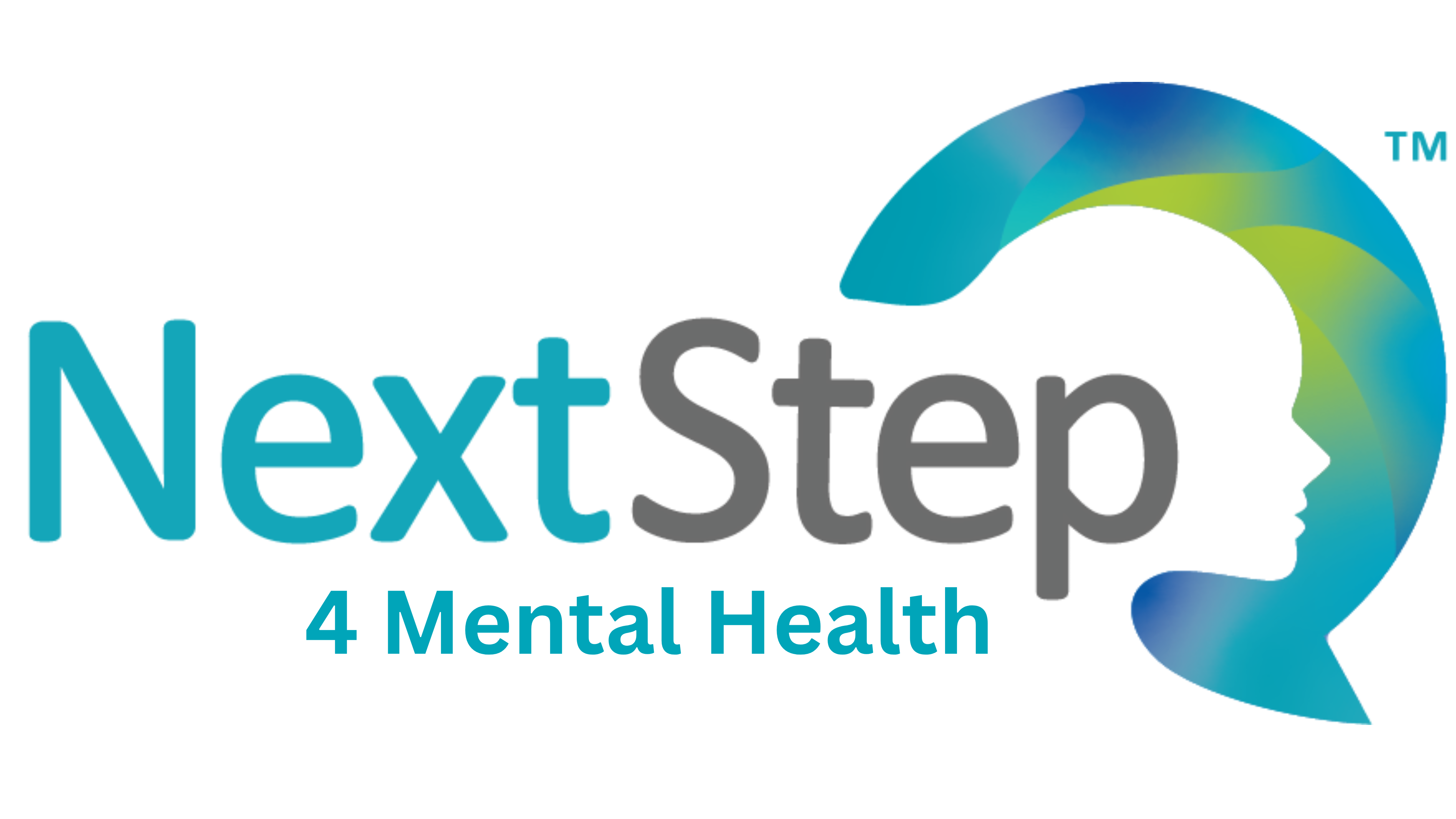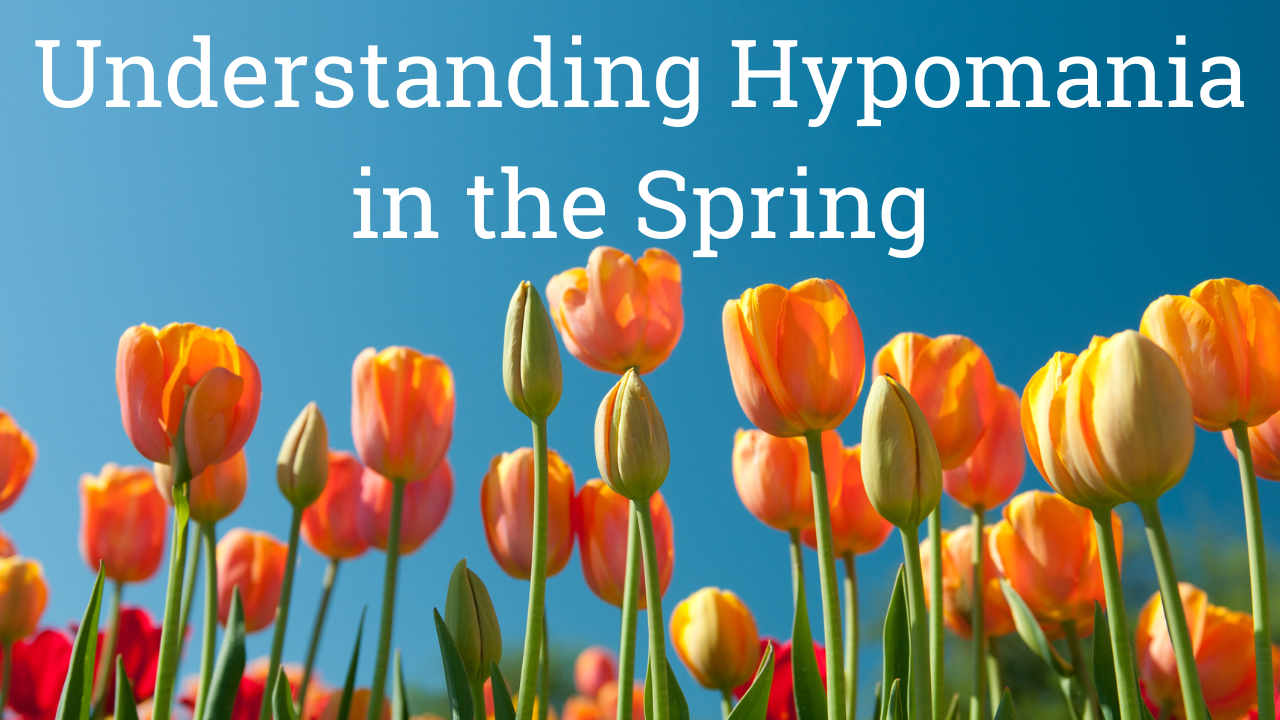
Understanding Hypomania in the Spring
For many people with bipolar spectrum disorders, including bipolar II disorder or cyclothymia, the arrival of spring can bring an unexpected challenge—hypomania. Hypomania is a state of elevated mood, increased energy, and heightened activity levels that can feel productive or even exhilarating at first.
However, if left unmanaged, it can lead to impaired judgment, increased impulsivity, and interpersonal or occupational difficulties.
Spring’s longer days and increased sunlight can impact circadian rhythms and neurotransmitter levels, potentially triggering mood shifts. If you notice racing thoughts, decreased need for sleep, excessive optimism, or impulsivity, take these proactive steps to support your mental health.
Tips for Preventing Hypomania
1. Stick to a Consistent Sleep Schedule
Lack of sleep can worsen hypomania. Try to:
• Go to bed and wake up at the same time each day
• Limit screen time before bed
• Create a relaxing bedtime routine
Read more here: [Do Warm-Colored Lights Help Sleep?]
2. Monitor Your Mood Daily
Tracking your mood can help you identify early warning signs. Use a journal or a mood-tracking app to note:
• Sleep patterns
• Energy levels
• Thoughts and behaviors
If you notice escalating symptoms, contact your treatment provider as soon as possible.
3. Be Mindful of Impulsivity
Hypomania can lead to risky behavior, such as unplanned spending, overcommitting, or socially inappropriate actions. To stay grounded:
• Set spending limits and avoid impulsive purchases
• Pause before making major commitments
• Check in with a trusted friend, therapist, or loved one for feedback
4. Prioritize Balanced Nutrition & Exercise
Spring’s warmer weather may inspire more activity, which can support well-being—but overstimulation may worsen symptoms. Try to:
• Stick to moderate, consistent exercise
• Eat a balanced diet to stabilize energy and blood sugar
• Limit excessive caffeine, sugar, and alcohol
5. Practice Relaxation Techniques
To offset heightened energy, integrate calming practices:
• Mindfulness or meditation to slow racing thoughts
• Gentle yoga or stretching
• Deep breathing to regulate the nervous system
6. Stay Connected to Your Support System
Hypomania can sometimes feel empowering, but staying connected ensures accountability. Keep in touch with:
• Your psychiatrist and other mental health providers
• Friends and family who can help you recognize symptoms early
• Support groups for shared experiences
When to Seek Professional Help
If you notice signs of hypomania—such as decreased need for sleep, racing thoughts, or impulsive behavior—contact your psychiatrist or mental health provider promptly.
While hypomania may not always feel distressing, it can escalate quickly and lead to impaired decision-making or risky behavior. Early treatment can help prevent more serious complications.
If you feel out of control, unsafe, or are unsure whether your symptoms are becoming more severe, seek immediate medical attention or visit the nearest emergency room.
At Next Step 4 Mental Health, our team specializes in helping individuals manage mood disorders with personalized treatment plans—including therapy, medication, and supportive lifestyle strategies.
Learn More

Fall-ing for Hypomania: The Bipolar Seasonal Twist
The Excitement of Fall
Ah, fall. That magical time of year when the world transforms into a tapestry of golden hues, and the temperature takes a gentle nosedive. For many of us, with or without Bipolar Disorder, it’s the season of rejuvenation. Out go the unforgiving swimsuits, which reminded us just how un-summer-ready our “summer bodies” were, and in come the forgiving yoga pants – the stretchy saviors of our self-esteem!
And let’s not even talk about the pumpkin spice lattes. By November, the blood type of many of us becomes pumpkin spice. Too many slices of pumpkin pie? No judgment here.
However, amidst the laughter and oversized sweaters, there’s a more serious shift that can occur. While most of us feel a heartwarming, cozy kind of good, some may begin to feel an unnatural, over-the-top, “is my coffee spiked?” kind of euphoria.
This isn’t your everyday “I-love-fall” feeling. For individuals with bipolar disorder, the transition into autumn can sometimes usher in a state known as hypomania.
What Is Hypomania?
Hypomania is characterized by an elevated mood, increased energy, and activity levels that are distinctly different from a person’s typical behavior. It might sound great, feeling supercharged and euphoric, but it often comes with a slew of problems like reduced need for sleep, talkativeness, racing thoughts, and sometimes even engaging in risky behaviors.
While not as severe as full-blown mania, hypomania isn’t a pumpkin walk in the park.

When to Seek Help for Hypomania
Learn More
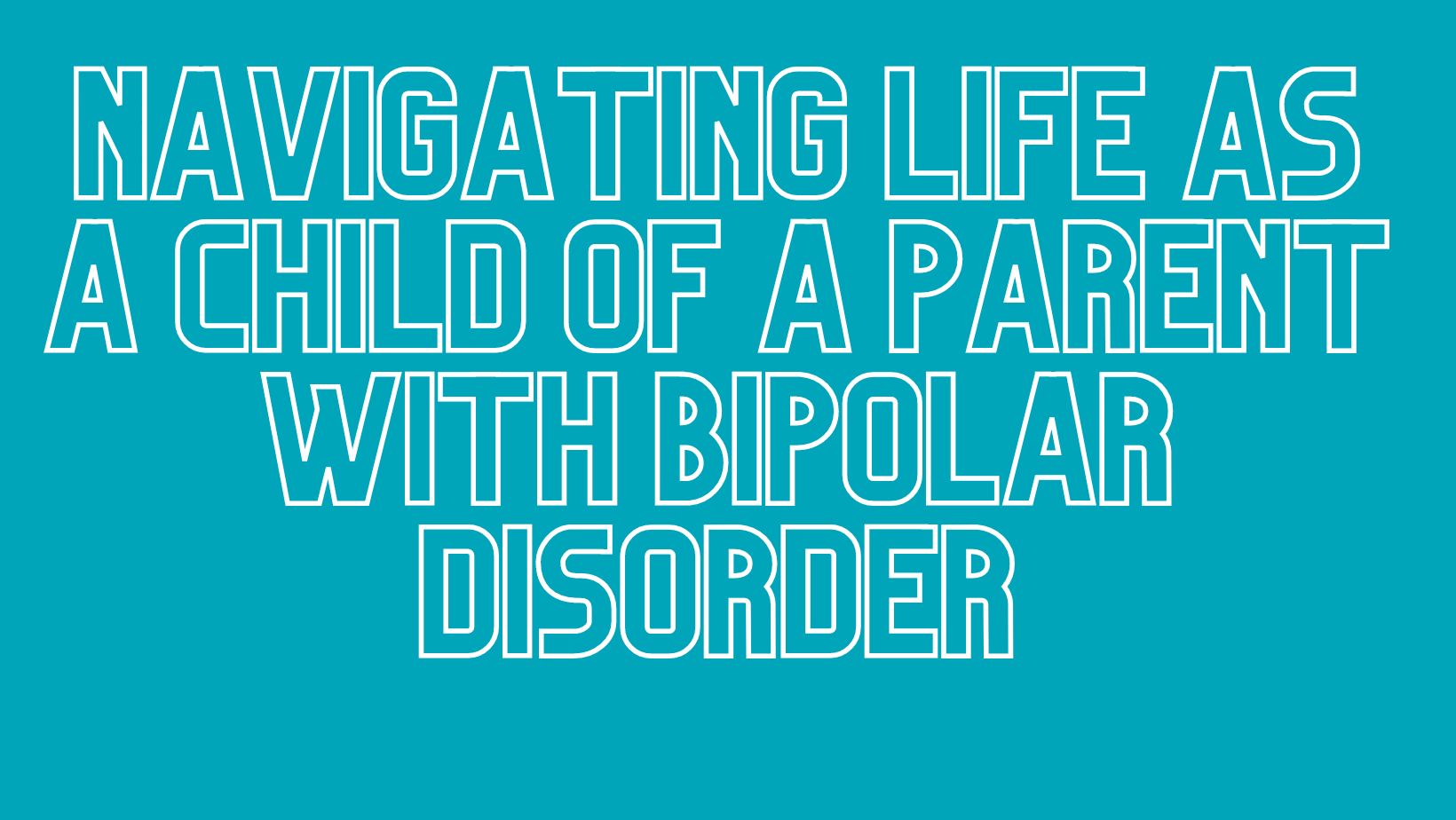
Thriving Under One Roof: Navigating Life as the Child of Someone with Bipolar Disorder
Growing up with a parent who has bipolar disorder can be challenging and complex, but it doesn’t mean that you can’t lead a fulfilling life. It’s essential to recognize that mental health impacts the entire family, and finding ways to create a thriving environment is crucial for everyone involved.
In this blog post, we’ll explore various strategies and resources that can help you, as the child of someone with bipolar disorder, build a supportive and flourishing life under one roof.
Understanding Bipolar Disorder
Education is the first step towards building a supportive environment. Take the time to learn about bipolar disorder, its symptoms, and treatment options. Understanding the condition can help you empathize with your parent’s experiences, reduce stigma, and foster open communication.
Understanding bipolar disorder can be overwhelming, but let’s break it down into the top things you need to know:
- Subtypes of Bipolar Disorder: Bipolar disorder is categorized into three main subtypes. Bipolar I disorder involves episodes of extreme high energy and agitation known as mania. Bipolar II disorder involves episodes of mild to moderate mania alternating with episodes of moderate to extreme depression. Cyclothymia is characterized by simultaneous depression and mania episodes. Some individuals may experience hypomania, which is a less intense form of mania.
- Duration of Episodes: Manic episodes can last for several days, during which individuals may display elevated mood, increased energy, impulsivity, and other symptoms associated with mania. It’s important to note that some types of bipolar disorder also include periods of depression, which can vary in duration.
- Treatment Options: Many individuals with bipolar disorder can effectively manage the condition over the long term with a combination of medication and talk therapy. Medications, such as mood stabilizers, can help regulate mood and prevent extreme fluctuations. Talk therapy, such as cognitive-behavioral therapy (CBT), can provide valuable support and help individuals develop coping strategies.
Remember, it’s essential to consult with a healthcare professional for an accurate diagnosis and personalized treatment plan. They can provide you with detailed information specific to your (or your parent’s) situation and guide you through the process of managing bipolar disorder effectively.
Take one step at a time, seek support from mental health professionals and support networks, and remember that with proper management, individuals with bipolar disorder can lead fulfilling lives.
Open Communication
Maintaining open and honest communication within the family is key. Encourage your parent to share their feelings and experiences, and express your own thoughts and concerns. Establishing a safe space for conversations can promote understanding, reduce tension, and create a supportive atmosphere for everyone.
If talking out loud isn’t always easy, consider journaling your thoughts.
Here at NextStep2MentalHealth, we offer a variety of therapy, including both individual and family.
Seek Support
Remember that you don’t have to navigate this journey alone. Seek support from trusted family members, friends, or support groups. The Depression and Bipolar Support Alliance provide resources both individuals who have a family member with bipolar disorder. Connecting with others who have similar experiences can provide a sense of belonging and validation, while also offering practical advice and coping strategies.
Establish Boundaries
Living with someone who has bipolar disorder can sometimes mean dealing with unpredictable moods and behaviors. It’s important to establish healthy boundaries to protect your own well-being. Communicate your needs clearly and respectfully, and work together with your parent to establish boundaries that promote a harmonious living environment.
Here’s a helpful guide on establishing and keeping healthy boundaries.
Self-Care
As a child of someone with bipolar disorder, it’s crucial to prioritize your own self-care. Take care of your physical and emotional well-being by engaging in activities you enjoy, practicing relaxation techniques, maintaining a healthy lifestyle, getting enough sleep, and seeking professional support if needed.
Remember, taking care of yourself is not selfish; it allows you to better support your parent and maintain your own mental well-being.
Educate Others
One way to break down the stigma surrounding mental health is to educate others about bipolar disorder. Share your experiences with trusted friends, teachers, or school counselors to raise awareness and foster understanding. By promoting empathy and acceptance, you contribute to creating a more inclusive and supportive community.
Accessing Resources
Take advantage of available resources and support networks. These resources can include support groups, therapy options, educational materials, and helplines. Reach out to these organizations for guidance and assistance in finding the right support for you.
Living with a parent who has bipolar disorder can be challenging, but it is possible to create an environment where everyone can thrive. By fostering open communication, seeking support, establishing boundaries, prioritizing self-care, educating others, and accessing available resources, you can build a fulfilling life under one roof. Remember that your well-being matters, and by taking care of yourself, you are better equipped to support your parent and create a positive family dynamic. Together, we can break the stigma and build a community where everyone feels understood and supported on their mental health journey.
We’re Here for You!
Are you seeking support and resources as a child of someone with bipolar disorder? NextStep2MentalHealth is here to help you thrive under one roof. Remember, you are not alone in this journey. Take the next step towards a flourishing life by reaching out to NextStep2MentalHealth. Together, we can navigate this path with empathy, understanding, and support. Click here to get started.
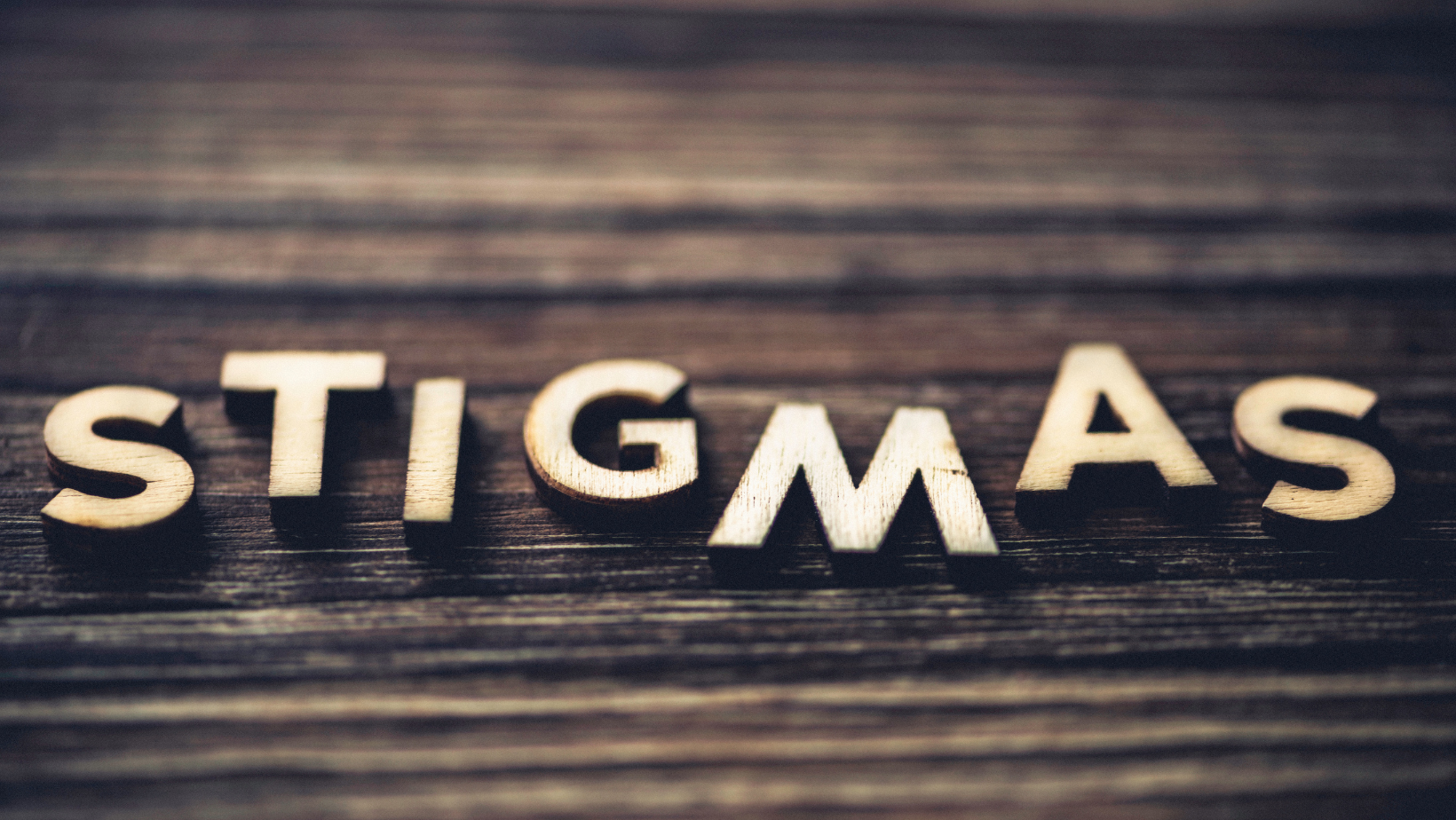
Breaking the Stigma of Bipolar Disorder
Bipolar spectrum disorder, previously known as manic depressive illness, is a mental health condition characterized by extreme mood swings that range from prolonged periods of high energy and euphoria (mania) to periods of intense sadness and hopelessness (depression). It is also characterized by abnormal sleep patterns.
Symptoms can range from mild to severe and patients can easily be misdiagnosed. Many people associate bipolar disorder with negative stereotypes, and the stigma can make it difficult for individuals living with bipolar disorder to seek help and receive the support they need.
If you need help managing bipolar disorder, we encourage you to seek the help you need. In the meantime, Dr. Ethan Short sheds light on tips for breaking the stigma of bipolar disorder.
Breaking the Stigma: Debunk the Myths
Breaking the stigma surrounding bipolar disorder is crucial for improving understanding and support for those living with this condition. By learning more about bipolar disorder and challenging common misconceptions, you can create a more supportive environment for loved ones living with this condition.
Myth #1: Bipolar Spectrum Disorder Is Rare
One of the most common misconceptions about bipolar spectrum disorder is that it is a rare condition. While severe Bipolar I disorder is more rare, less severe versions are more common. In reality, 4.4% of Americans will experience bipolar diagnosis at some point in their life. According to the World Health Organization, 40 million people were living with bipolar disorder in 2019.
Despite this, many people continue to believe that bipolar spectrum disorder is a rare or exotic condition, which can make it difficult for individuals to seek help and feel understood.
Myth #2: It’s “Just” Mood Swings
Another common misconception is that bipolar disorder is just another name for mood swings. While everyone experiences changes in mood, the mood swings associated with bipolar disorder are more extreme and can last longer than a week. These mood swings can have a significant impact on a person’s ability to function in daily life, making it difficult to work or maintain relationships.
Myth #3: Bipolar Disorder Can Make You Dangerous
Perhaps the most damaging misconception surrounding bipolar disorder is the belief that individuals with this condition are “crazy” or dangerous. In reality, individuals with bipolar disorder are no more likely to be violent than anyone else. They actually tend to be much more creative than others without the condition. However, this stereotype can make it difficult for individuals to feel accepted and supported by their communities, which can have a negative impact on their mental health.
Myth #4: You Can’t Live a Productive Life with Bipolar Disorder
Living with bipolar disorder can be challenging, but with the right support and treatment, individuals with this condition can live fulfilling and productive lives. Treatment typically involves a combination of medication, therapy, and lifestyle changes, such as optimizing daily routines, getting consistent sleep and regular exercise, and maintaining a healthy diet. Understanding how your condition affects the way you think can also be very beneficial.
Breaking the Stigma and Supporting Your Loved Ones
Breaking the stigma surrounding bipolar disorder is crucial for improving understanding and support for individuals living with this condition. By challenging common misconceptions and promoting empathy and understanding, you can create a more supportive environment for individuals living with bipolar disorder.
With increased awareness and understanding, we can help to break down barriers and ensure that everyone has access to the resources and support they need to live a happy and healthy life. You may find that reading more about bipolar disorder or joining a support group (for family members or caregivers of someone with bipolar disorder) can help you.
We’re Here for You
If you are struggling with any sort of mental health issues, seeking help from a mental health professional can make a significant difference in your life. Here at NextStep2MentalHealth, we understand that seeking help can be challenging, but we are here to support you every step of the way.
Our experienced mental health professionals provide a safe and supportive environment for you to explore your thoughts and feelings, develop coping strategies, and work towards your mental health goals. Don’t hesitate to reach out to us for help – we are here for you. Schedule your appointment here.
About Dr. Short
 Dr. Short graduated from University of South Carolina in Columbia, South Carolina, with a Bachelor of Arts in Psychology (Cum Laude). He spent 3 valuable years engaging in surgical research prior to completing medical school and psychiatric residency training at University of Louisville. He greatly enjoyed his time there gaining clinical skills and knowledge, as well as dedicating over 500 hours to educating medical students, residents, social workers, nursing staff, as well as volunteering his time to local high schools and guidance counselors to help educate the public on mental health needs in his community.
Dr. Short graduated from University of South Carolina in Columbia, South Carolina, with a Bachelor of Arts in Psychology (Cum Laude). He spent 3 valuable years engaging in surgical research prior to completing medical school and psychiatric residency training at University of Louisville. He greatly enjoyed his time there gaining clinical skills and knowledge, as well as dedicating over 500 hours to educating medical students, residents, social workers, nursing staff, as well as volunteering his time to local high schools and guidance counselors to help educate the public on mental health needs in his community.
He has his full medical license and board-certified by the American Board of Psychiatry and Neurology.
Dr. Short has extensive experience working with adults with severe mental illness including schizophrenia and bipolar disorders, addictions (opiates, methamphetamine, benzodiazepines, alcohol, tobacco, etc.), PTSD, depression and anxiety disorders, and adult ADHD. He is trained in multiple psychotherapies, but primarily practices Acceptance and Commitment Therapy as an alternative to medication, or as an adjunctive treatment for the above conditions.
You can now book an appointment with Dr. Short here. or give us a call at our Louisville, Kentucky mental health clinic at 502-339-2442.
Learn More
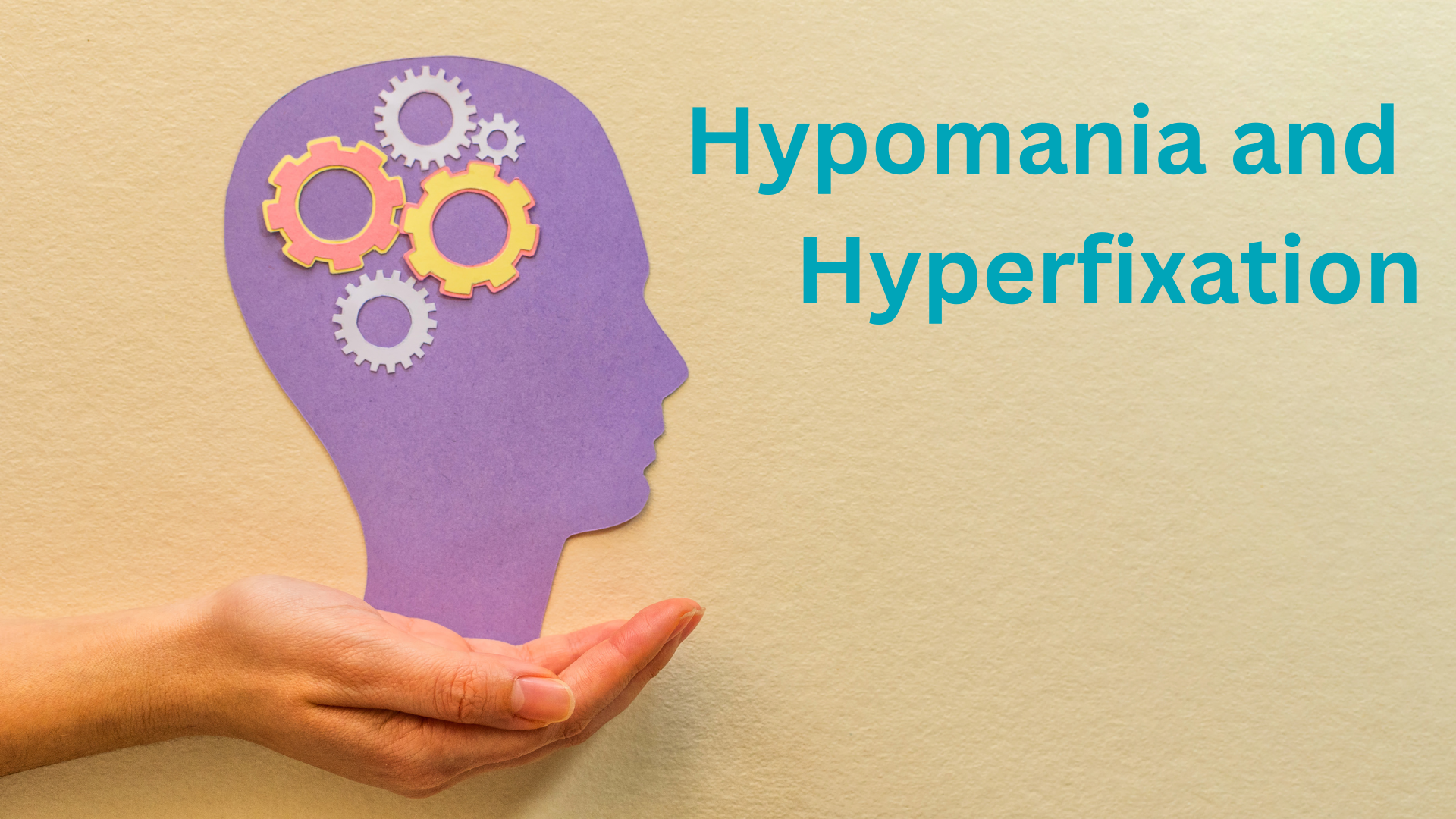
Hypomania and Hyperfixation: What’s the Difference?
Mental health conditions can manifest in various ways, and two related concepts that often come up in discussions about mental health are hyperfixation and hypomania. Hyperfixation is an intense preoccupation with a particular object, activity, or topic, while hypomania is a state of elevated mood and energy that is less severe than full-blown mania.
While both hyperfixation and hypomania can have a significant impact on a person’s life, they are distinct phenomena that are associated with different underlying conditions.
In this blog post, we will explore the similarities and differences between hyperfixation and hypomania, as well as their respective causes, symptoms, and treatments. Whether you or someone you know is struggling with hyperfixation or hypomania, understanding these concepts is an important step in seeking the right help and support for optimal mental health.
Are Hyperfixation and Hypomania the Same Thing?
No, they are not.
Hypomania is a specific syndrome that occurs in patients with bipolar disorder and is characterized by a period of at least four consecutive days during which a person experiences persistently elevated, expansive, or irritable mood and abnormally and persistently increased activity or energy.
Hyperfixation is a phenomenon that can occur in various mental health conditions. For instance, people with OCD can become hyperfixated on a specific obsession, individuals with generalized anxiety disorder may become hyperfixated on worries about the future, and those with PTSD or complex trauma can become hyperfixated on intrusive memories from the past.
Additionally, people with ADHD may become hyperfixated on projects they are highly interested in, while individuals with severe mental illnesses such as psychosis may become hyperfixated on a specific delusion.
In other words, it is clear that hyperfixation and hypomania are not the same thing.
Similarities between Hyperfixation and Hypomania
Hyperfixation and hypomania share some similarities in that they both involve a heightened state of focus and energy. In both cases, a person may feel driven to pursue a particular interest or activity, often to the point of neglecting other responsibilities or obligations.
Differences between Hyperfixation and Hypomania
However, there are also important differences between the two. Hyperfixation is not necessarily accompanied by changes in mood or energy level, whereas hypomania is a distinct state of elevated mood and activity. Hypomania is also a symptom of bipolar disorder, whereas hyperfixation may be seen in a range of conditions, including ADHD or Obsessive-Compulsive Disorder (OCD).
It is important to note that while hyperfixation may be a symptom of certain conditions, it is not itself a medical diagnosis. Hypomania, on the other hand, is a clinical syndrome that requires immediate evaluation and treatment by a mental health professional.
Hyperfixation refers to a strong and intense fixation on a particular object, activity, or topic, to the point where it becomes difficult to focus on anything else. Hypomania, on the other hand, is a symptom of bipolar disorder and refers to a state of elevated mood, energy, and activity that is less severe than full-blown mania. People experiencing hypomania may feel overly confident, euphoric, and impulsive, and may engage in reckless behavior, such as overspending, gambling, or sexual promiscuity.
How Are They Treated?
If you notice signs of hypomania or hyperfixation in yourself or someone you know, it is important to seek professional help. Here at NextStep2MentalHealth, our multidisciplinary team can assess the situation, provide an accurate diagnosis, and recommend an appropriate course of treatment.
For hypomania, treatment may include medication, therapy, or a combination of both. The specific treatment plan will depend on the severity of the symptoms, the underlying cause, and other individual factors. It is important to note that hypomania can escalate into full-blown mania if left untreated, which can have serious consequences on a person’s life and well-being.
For hyperfixation, treatment will depend on the underlying condition. For example, if hyperfixation is a symptom of ADHD, treatment may involve lifestyle modifications, therapy, medication, or a combination of both to help manage symptoms and improve daily functioning. If hyperfixation is a symptom of OCD, treatment may involve exposure and response prevention therapy, medication, or a combination of both.
It is crucial to seek help as soon as possible if you or someone you know is experiencing symptoms of hypomania or hyperfixation. Early intervention can lead to more effective treatment outcomes and a better quality of life.
We’re Here for You
If you are struggling with any sort of mental health issues — whether that’s signs of hyperfixation or signs of hypomania, seeking help from a mental health professional can make a significant difference in your life. Here at NextStep2MentalHealth, we understand that seeking help can be challenging, but we are here to support you every step of the way.
Our experienced mental health professionals provide a safe and supportive environment for you to explore your thoughts and feelings, develop coping strategies, and work towards your mental health goals. Don’t hesitate to reach out to us for help – we are here for you. Schedule your appointment here.
Learn More
How Spring and Daylight Savings Affects Hypomania
Bipolar disorder affects 4.4% of all adults at some point throughout their life, and about 2.8% of adults have been diagnosed with bipolar disorder in the last year, according to the National Institutes of Mental Health. Out of the adults diagnosed with bipolar disorder, nearly 83% experience extreme disruptions to their daily routines. Bipolar disorder is a mental health illness characterized by extreme shifts in mood that vacillate between manic episodes and depressive episodes, although each episode impacts your quality of life differently.
Interestingly, manic and hypomanic episodes tend to increase in the spring in the Northern hemisphere. In this article, we’ll help shed light on what manic episodes, why they tend to increase in the spring, and what you can do to stay proactive and reduce their impact on your quality of life.
What Is a Manic Episode?
According to the American Psychiatric Association’s Diagnostic and Statistical Manual of Mental Disorders (DSM-5), a person must have experienced at least one episode of mania or hypomania in order to be diagnosed with one of the bipolar disorders (in addition to the depressive episodes too.) A manic episode is more than just a mood swing. It is an emotional state in which a person may feel elevated or excessively irritable. Manic episodes can last anywhere from four days to a few months.
At first, you might not think that an elevated mood is a bad thing, and because of this, many people might not seek help at first. However, it’s important to note that mania isn’t just “feeling good”; rather, these symptoms are a departure from what’s normal for your i.e., your normal actions or behaviors.
Mania can be so intense that it can impact your performance at work and interfere with your relationships with friends and family.
How Spring Affects Hypomania and Mania
According to a study published in Psychiatry Investigation, the changes in light (and its impact on circadian rhythms) may be the culprit of increased hypomania episodes in the spring. According to researchers:
“A possible mechanism underpinning these relationships is a misalignment between the endogenous and environmental circadian rhythms due to acute circadian rhythm shifting caused by the increased light exposure in the spring.”
In other words, if you’re sensitive to seasonal changes and/or light changes, you may see changes in your bipolar symptoms. Some people with bipolar disorder are more sensitive to light than others: “The extra daylight, the lifting of winter’s gloom and the experience of again being outside in the bright, fresh, springtime air, all serve to activate bipolar neurochemistry.” (Source)
Why Treatment Matters for Manic Episodes
 “One of the most dangerous aspects is that multiple untreated manic or hypomanic episodes can be very harmful to the brain. They can sometimes even lead to cognitive impairment and/or decreasing IQ over time. (This can happen because leaving mania untreated is a lot like running a car eighty miles an hour all day, every day. Eventually the motor—the brain—will break down.),” says Dr. Brian Briscoe.
“One of the most dangerous aspects is that multiple untreated manic or hypomanic episodes can be very harmful to the brain. They can sometimes even lead to cognitive impairment and/or decreasing IQ over time. (This can happen because leaving mania untreated is a lot like running a car eighty miles an hour all day, every day. Eventually the motor—the brain—will break down.),” says Dr. Brian Briscoe.
The right treatment can also:
- Improve the quality of your life
- Can help you engage in relationships
- Can better equip you to succeed in the workplace
- Help stabilize mood changes and reduce symptoms
- Help prevent future manic or depressive episodes from occurring and reduce their overall intensity
Treatment for Manic Episodes
The primary treatments for bipolar disorder include medications (including mood stabilizers) and psychotherapy to control symptoms.
In addition to psychiatric care, there are many lifestyle changes that can support your mental well-being. This includes maintaining a regular exercise schedule, following a balanced, nutrient-dense diet, and attending your therapy sessions. For people who are more sensitive to changes in light, it’s even more important to practice good sleep hygiene practices.
Good sleep hygiene practices include:
- Going to bed at the same time every night
- Sleeping in a cool, dark room
- Avoiding TV or phone screens for 1-2 hours before bed
- Using the “night mode” on electronics in the evening
- Spending time outside in the morning (helps to set your circadian rhythm)
- Exercising (but not too close to bed)
In addition, it’s essential to adhere to your recommended medication schedules. If you need help remembering to take medication, try setting a reminder on your phone.
The Right Treatment Can Help
If you, or someone whom you love, are struggling with bipolar disorder, we can help. To make an appointment, call our office at 502-339-2442 or get in touch with us at to book an appointment with one of our compassionate and non-judgmental providers.
And please, if you’re not comfortable getting help from us, get help from another qualified doctor or therapist.
Because you can count on this: Life and the future, even with bipolar disorder, can and will be much brighter with treatment.
Learn More
Effective Treatments for Bipolar Disorder
Bipolar disorder is a complex condition, and the right treatment plan must address all of the complexities of the disorder. The good news is that there are many effective treatments that can help you manage your symptoms so that you can hold a career and enjoy meaningful relationships.
If you or a loved one are suffering from bipolar disorder, we recommend that you seek help as soon as possible. In the meantime, here is an overview of the most common treatments for bipolar disorder.
What Is Bipolar Disorder?
Bipolar disorder is characterized by severe mood swings. The shifts between manic episodes and depressive episodes can be debilitating which may make it difficult — if not impossible — to maintain a satisfying job and relationships. There are three types of bipolar disorder:
- Bipolar I
- Bipolar II
- Cyclothymia
Watch the video below to learn more about bipolar disorder.
Treating Bipolar Disorder
There isn’t a cure for bipolar disorder, but treatment can help manage symptoms so that you can enjoy an improved quality of life. Medication and therapy are effective treatments for bipolar disorder.
Medication
There isn’t just one type of medication used to treat bipolar disorder. There are many different options, and some individuals may do best with a combination of medications. This is especially true if you’re also dealing with other mental health conditions, such as anxiety. Not all medications and dosages work the same for each individual so the key to a successful treatment plan is finding both the right medication and the right dosage.
Examples of medications used to treat bipolar include:
- Mood stabilizers
- Antipsychotics
- Antidepressants
- Antidepressant-antipsychotic
Depending on your unique needs, you may also benefit from anti-anxiety medication as well.
Why a Combination of Medications Can Help Ease Symptoms of Bipolar Disorder
According to the experts at Mayo Clinic, antidepressants alone may not be ideal. While antidepressants help to manage the symptoms of bipolar depression, they can sometimes trigger a manic episode. To help prevent that, a mood stabilizer might also be prescribed. This is just one example that highlights the complexities of bipolar disorder. However, sticking with your medication schedule — even if you start to feel better — is essential when it comes to managing your symptoms.
Psychotherapy
In addition to medication, psychotherapy is another treatment option. Psychotherapy is sometimes called “talk therapy”, and there are many different types of therapy under this umbrella. Psychotherapy includes therapies such as cognitive behavioral therapy (CBT) and is designed to help a person manage troubling symptoms and improve daily functioning, according to the American Psychiatric Association.
Other Ways to Help Manage Symptoms
In addition to medication and therapy, there are still a few other ways to help manage the symptoms of bipolar disorder.
Although one person’s treatment plan may vary to the next, there are a few common tips to make your treatment as effective as possible:
- Stick with your medication schedule and take all medications as prescribed
- Don’t skip your medication even if you’re feeling better
- Adopt healthy lifestyle practices including a well-balanced diet and regular exercise
- Avoid alcohol and recreational drugs
- Prioritize quality sleep (which helps to stabilize your mood)
Most importantly, if you think your current treatment regimen isn’t working, don’t hesitate to reach out. Sometimes just a fine-tuning of your medication is all you need to feel better. To schedule an appointment, give us a call at our Louisville, Kentucky mental health clinic at 502-339-2442 or click here.
Learn More

10 Signs of Hypomania
Individuals with bipolar 1 disorder may experience mania, while individuals diagnosed with bipolar 2 disorder are more likely to experience hypomania. Hypomania is typically more mild than mania and doesn’t last as long as manic episodes.
Both hypomania and mania are periods of excited behavior that can have a significant impact on your daily life. If you suspect you have hypomania or mania, our multidisciplinary team encourages you to reach out to us for a bipolar evaluation.
In the meantime, let’s take a look at what hypomania is and how it’s treated.
10 Signs of a Hypomanic Episode
1. Extremely talkative
While some people are naturally more talkative than others (which is normal and okay!), a sudden shift to being more talkative than normal (whatever is normal for you) can be a sign of hypomania. This includes:
- Not being able to listen to others or letting others talk because you’re talking
- Talking very rapidly
- Talking very loudly
- Jumping from topic to topic
2. Elation or giddiness
It’s normal to experience highs and lows throughout your day, but a sudden giddiness (without any clear cause) can be related to hypomania. These moods are marked by feelings of elation and euphoria and increased energy levels.
3. Irritability
While elation and giddiness are linked to hypomania, the flip side is also true: you may see a marked increase in irritability. This includes:
- Being argumentative
- Being easily agitated
- Feeling easily irritated by everything
- Rapid mood swings
- “Rage” attacks
- Children in a hypomania episode may swing quickly from irritation to elation.
4. Decreased need for sleep
Manic episodes are often marked by periods of extreme energy. During a manic episode, you might not feel the need to sleep, or you may get by with very little sleep. Hypomania is also marked by a decreased need for sleep and lots of energy.
5. Racing thoughts
Racing thoughts can cause you to shift quickly from one topic to the next. Some people describe this as a swirl of thoughts in which your words can’t keep up with your thoughts.
6. Grandiosity
Grandiosity is a symptom experienced during both manic and hypomanic episodes. People experiencing grandiose delusions often describe larger-than-life feelings. This can include feeling invincible, superior, or invulnerable.
7. High energy
Even without adequate sleep, hypomania can lead to high energy.
8. Distractibility
Can’t focus? Easily distracted? These can be signs of many mental health conditions, including anxiety, ADHD, and bipolar disorder. A proper diagnosis ensures you get the right treatment, so don’t hesitate to share all of your symptoms, including distractibility.
9. Impulsivity
Along with racing thoughts and high energy comes impulsivity.
10. Increased goal-directed activity
Have you started multiple projects? This could be a sign of increased goal-directed activity. When paired with excess energy and little sleep, you could get swept up in the whirlwind.
Are You Dealing with Hypomania or Mania?

Bipolar Treatment in Louisville, Kentucky
Because bipolar disorder can profoundly impact your life, it’s essential to work with a compassionate and experienced provider who understands the complexities of this disorder. At Next Step 2 Mental Health, we know that living with bipolar can be challenging, but the right treatment can help.
Treatments include:
- Medication
- Psychotherapy
- Therapy
If you or a loved one are experiencing any of the signs of Bipolar Disorder – or need help managing Bipolar Disorder — we can help you take your next steps. Call our office today at 502-339-2442, or book an appointment online.
Learn More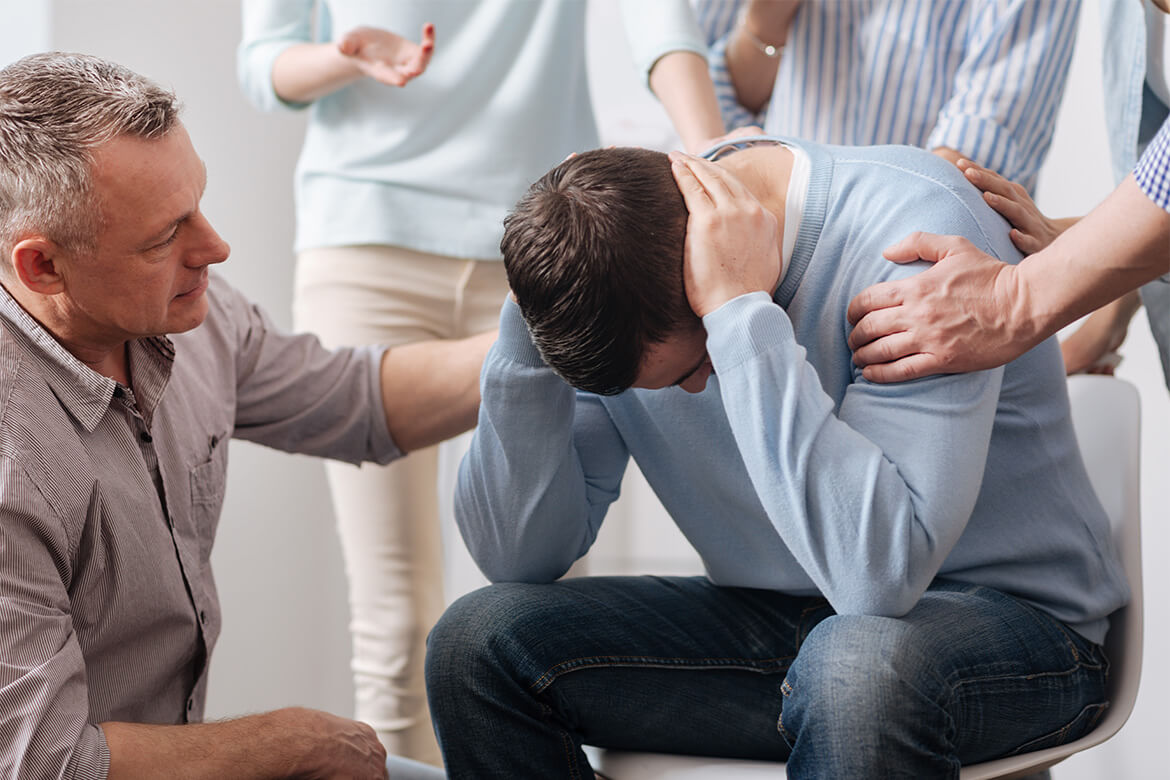
Bipolar Disorder Q&A
What Are the Types of Bipolar Disorder?
Did you know there is more than one type of bipolar disorder? Here are a few different types of bipolar disorder:
- Bipolar I Disorder: Individuals with bipolar 1 disorder experience manic episodes that last at least 7 days. Sometimes, severe manic symptoms may lead to the need for immediate hospital care. The depressive episodes may last up to two weeks.
- Bipolar II Disorder: This type of bipolar disorder is characterized by a pattern of depressive episodes and hypomanic episodes (not the same intensity of the manic episodes seen in bipolar 1 disorder)
- Cyclothymic Disorder: These symptoms do not meet the diagnostic requirements for a hypomanic episode and a depressive episode.
What Are the Signs and Symptoms of Bipolar Disorder?
In a manic episode, symptoms include:
- Feelings of being high or even elated
- Increased irritability
- Racing thoughts
- Increased activity levels (and decreased sleep)
- Increased chance of engaging in risky behaviors
On the other hand, symptoms during a depressive episode include:
- Feeling down or blue
- Increased need for sleep
- Slowed speech
- Difficulty making decisions or concentrating
- Feelings of hopelessness
According to the National Institute of Health, some individuals may even experience symptoms from both groups during the same episode.
How Many People Are Diagnosed with Bipolar Disorder?

There is no cure for bipolar disorder, but you can manage the condition and lead a healthy, productive life with the right treatment. Due to the seriousness of bipolar, staying diligent with treatment (including medication) is crucial. Bipolar disorder affects about 2.3 million Americans. Left untreated, suicide is the leading cause of premature death in individuals with bipolar.But the good news is that bipolar is treatable. The National Advisory Mental Health Council estimates that 80% of those diagnosed and receive treatment have a high success rate of treatment with reduced relapses and hospitalizations.
How Is Bipolar Treated?
Because bipolar disorder can profoundly impact your life, it’s essential to work with a compassionate and experienced provider who understands the complexities of this disorder. At Next Step 2 Mental Health, we know that living with bipolar can be challenging, but the right treatment can help.Treatments include:
- Medication
- Psychotherapy
- Therapy
In addition to the above treatments, it’s important to lead a healthy lifestyle with regular experience and a well-balanced meal. If you need help sticking with your treatment, let your provider know. It’s essential to continue with your medication, even if you’re feeling good.
If – at any time – you experience a mental health crisis, call 9-1-1.
If you or a loved one are experiencing any of the signs of Bipolar Disorder – or need help managing Bipolar Disorder — we can help you take your next steps. Call our office today at 502-339-2442, or book an appointment online.
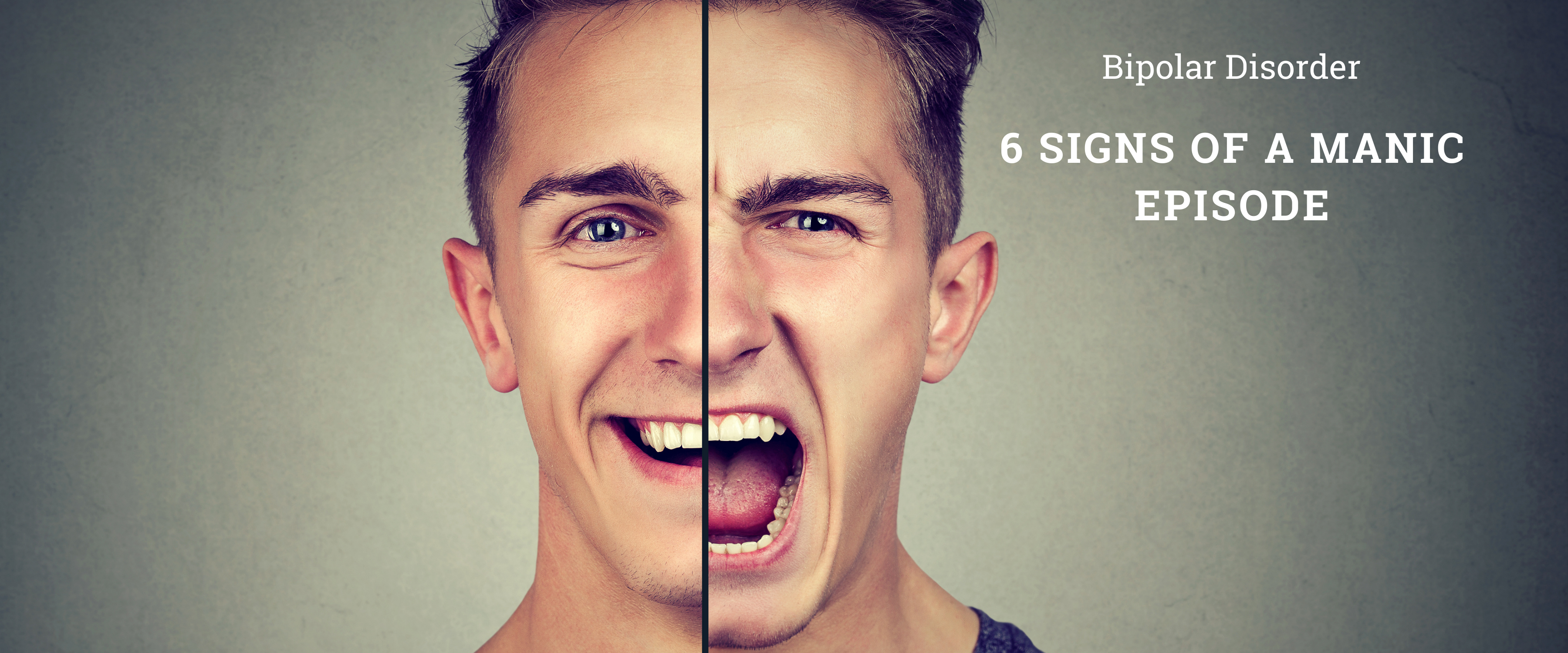
What Is a Manic Episode?
Bipolar disorder affects 4.4% of all adults at some point throughout their life, and about 2.8% of adults have been diagnosed with bipolar disorder in the last year, according to the National Institutes of Mental Health. Out of the adults diagnosed with bipolar disorder, nearly 83% experience extreme disruptions to their daily routines. Bipolar disorder is a mental health illness characterized by extreme shifts in mood that vacillate between manic episodes and depressive episodes, although each episode impacts your quality of life differently.
If you or a family member are newly diagnosed with bipolar disorder, you might have questions about what each episode is. In this article, we’ll help shed light on what manic episodes are and what you can do to reduce their impact on your quality of life.
What Is a Manic Episode?
According to the American Psychiatric Association’s Diagnostic and Statistical Manual of Mental Disorders (DSM-5), a person must have experienced at least one episode of mania or hypomania in order to be diagnosed with one of the bipolar disorders (in addition to the depressive episodes too.) A manic episode is more than just a mood swing. It is an emotional state in which a person may feel elevated or even irritable. Manic episodes can last anywhere from four days to a few months.
At first, you might not think that an elevated mood is a bad thing, and because of this, many people might not seek help at first. However, it’s important to note that mania isn’t just “feeling good”; rather, these symptoms are a departure from what’s normal for your i.e., your normal actions or behaviors.
Mania can be so intense that it can impact your performance at work and interferes with your relationships with friends and family.
Signs of a Manic Episode
Dr. Briscoe continues, “During [a manic episode], the person may experience excessive amounts of energy, a decreased need for sleep, euphoria (an unnaturally elevated mood), irritability, and/or excessive involvement in projects or activities. These are just examples, and not everyone shows every symptom.” Below, we’ll take a look at the common, observable signs of a manic episode.
1.Decreased Need for Sleep
Depression — whether that’s seasonal affective disorder, major depression, or a bipolar depressive episode — can increase your need for sleep. However, a person in the midst of a manic episode may demonstrate little need for sleep. He or she may go to bed and wake up just an hour or two later, wide awake and ready to continue on a project or activity. Increased energy is listed as the primary criterion for bipolar disorder, according to this study.
2. Racing Thoughts
This is another common sign of a manic episode. Racing thoughts can also lead to increased speed at which your loved one is talking.
3. Easily Distracted
All of those racing thoughts can lead to another sign of mania called flight of ideas. To keep up with the racing thoughts, the mind seems to jumps quickly from one idea to the next. This can make your loved one appear to be easily distracted.
4. Engaging in Activities that Hold the Potential for Painful Consequences
Risky behaviors include unrestrained shopping sprees, gambling, making foolish business investments, or even hypersexuality. Risky behaviors can include illicit behaviors, but it’s not limited to them. For instance, an unrestrained shopping spree could be considered a sign of a manic episode, particularly if you’re normally not a shopper.
5. Increased Irritability and Hostility
During a manic episode, it’s normal to feel elevated and happy and good, but it’s also normal to feel irritable. However, if you notice that a loved one is acting aggressively or mentioning thoughts about suicide, it’s important to recognize these signs as a mental health emergency.
Seek immediate psychiatric care if you or a loved one notice hostility or concerns about suicide.
The National Suicide Prevention Lifeline is a United States-based suicide prevention network of over 160 crisis centers that provides 24/7 service via a toll-free hotline with the number 1-800-273-8255. It is available to anyone in suicidal crisis or emotional distress.
6. Delusions of Grandeur
Delusions of grandeur are spurred by an inflated sense of self. Examples of delusions of grandeur include:
- Quitting your job suddenly to run for a political office in your state
- Keeping the notion that you are friends with a celebrity
How do you know if a thought is a delusion of grandeur? Remember, mania departs from what is normal behavior for you or a loved one. For example, if your loved one has always been interested in politics and has pursued a career in politics, then running for a political office isn’t out of the ordinary. However, if your loved one has never been interested in politics and then quits his job suddenly, that could be a red flag.
7. Focus on Goal-Oriented Tasks
You might notice your loved develop an obsession for a specific activity or project. It’s normal to feel excited about a project you’re passionate about, but the difference here is that during mania the hyperfocus on the task interferes with your daily life. For example, you might so focused on a specific project that you miss work or skip out on familial obligations to focus on the task at hand.
Why Treatment Matters for Manic Episodes
 “One of the most dangerous aspects is that multiple untreated manic or hypomanic episodes can be very harmful to the brain. They can sometimes even lead to cognitive impairment and/or decreasing IQ over time. (This can happen because leaving mania untreated is a lot like running a car eighty miles an hour all day, every day. Eventually the motor—the brain—will break down.),” says Dr. Brian Briscoe.
“One of the most dangerous aspects is that multiple untreated manic or hypomanic episodes can be very harmful to the brain. They can sometimes even lead to cognitive impairment and/or decreasing IQ over time. (This can happen because leaving mania untreated is a lot like running a car eighty miles an hour all day, every day. Eventually the motor—the brain—will break down.),” says Dr. Brian Briscoe.
The right treatment can also:
- Improve the quality of your life
- Can help you engage in relationships
- Can better equip you to succeed in the workplace
- Help stabilize mood changes and reduce symptoms
- Help prevent future manic or depressive episodes from occurring and reduce their overall intensity
Treatment for Manic Episodes
The primary treatments for bipolar disorder include medications (including mood stabilizers and antipsychotics) and psychotherapy to control symptoms.
In addition to psychiatric care, there are many lifestyle changes that can support your mental well-being. This includes maintaining a regular exercise schedule, following a balanced, nutrient-dense diet, and attending your therapy sessions.
In addition, it’s essential to adhere to your recommended medication schedules. If you need help remembering to take medication, try setting a reminder on your phone.
The Right Treatment Can Help
If you, or someone whom you love, are struggling with Bipolar Disorder, we can help. To make an appointment, call our office at 502-339-2442 or get in touch with us at to book an appointment with one of our compassionate and non-judgmental providers.
And please, if you’re not comfortable getting help from us, get help from another qualified doctor or therapist.
